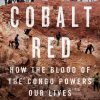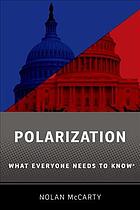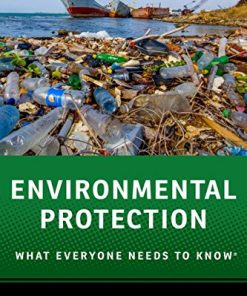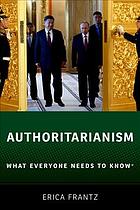Civil Resistance What Everyone Needs To Know 1st Edition by Erica Chenoweth 0190244429 9780190244422
$50.00 Original price was: $50.00.$25.00Current price is: $25.00.
Civil Resistance: What Everyone Needs To Know 1st Edition by Erica Chenoweth – Ebook PDF Instant Download/DeliveryISBN: 0190244429 9780190244422
Full download Civil Resistance: What Everyone Needs To Know 1st Edition after payment.
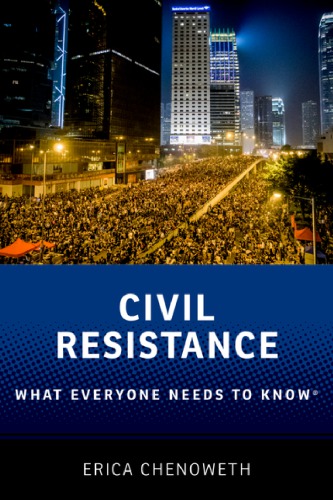
Product details:
ISBN-10 : 0190244429
ISBN-13 : 9780190244422
Author : Erica Chenoweth
A sweeping overview of civil resistance movements around the world that explains what they are, how they work, why they are often effective, and why they can fail.Civil resistance is a method of conflict through which unarmed civilians use a variety of coordinated methods (strikes, protests, demonstrations, boycotts, and many other tactics) to prosecute a conflict without directly harming or threatening to harm an opponent. Sometimes called nonviolent resistance, unarmed struggle, or nonviolent action, this form of political action is now a mainstay across the globe. It was been a central form of resistance in the 1989 revolutions and in the Arab Spring, and it is now being practiced widely in Trump’s America. If we are going to understand the manifold protest movements emerging around the globe, we need a thorough understanding of civil resistance and its many dynamics and manifestations.In Civil Resistance: What Everyone Needs to Know® , Erica Chenoweth — one of the world’s leading scholars on the topic–explains what civil resistance is, how it works, why it sometimes fails, how violence and repression affect it, and the long-term impacts of such resistance. Featuring both historical cases of civil resistance and more contemporary examples such as the Arab Awakenings and various ongoing movements in the United States, this book provides a comprehensive yet pithy overview of this enormously important subject.
Civil Resistance: What Everyone Needs To Know 1st Table of contents:
1. The Basics
How does civil resistance create change?
How do you define nonviolent action?
What are common nonviolent actions?
What is the difference between civil resistance and protest?
What roles do art and music play in civil resistance?
What is the role of humor in civil resistance?
What are “parallel institutions”?
Is rioting considered civil resistance?
Does property destruction count as civil resistance?
Are hunger strikes, self-immolation, and other forms of self-harm considered civil resistance?
What is the difference between civil resistance and civil disobedience?
Is digital hacktivism ever considered civil resistance?
Are most people involved in nonviolent campaigns pacifists?
How is civil resistance related to “civility”?
What is the difference between a civil resistance campaign and a social movement?
What are the stages of a civil resistance campaign?
When is it legitimate to use civil resistance?
Can nonviolent resistance be immoral?
Is it fair to expect oppressed people to fight back against oppression using only civil resistance?
2. How Civil Resistance Works
What makes civil resistance campaigns effective?
How do nonviolent civil resistance campaigns attract large followings?
How do successful civil resistance campaigns get going?
Once people have the opportunity and motivation to mobilize, why do they choose nonviolent action rather than armed resistance?
Is there a formula for effective civil resistance campaigns?
Who participates in civil resistance campaigns?
How are women involved in civil resistance?
How can civil resistance movements prompt a regime’s supporters to defect?
What’s the difference between defections and coups?
How do campaigns attract more supporters, even while being attacked by the regime?
Which civil resistance tactics are most—and least—effective?
How do social media and digital technology affect nonviolent campaigns?
What is the 3.5% rule?
Does this mean that if a movement just gets 3.5% of the population into the streets, it will always win?
Are there any exceptions to the 3.5% rule?
Which campaigns have featured the largest percentages of popular participation?
Does the 3.5% rule apply to campaigns that aren’t aimed at major results like removing a national leader or achieving independence—say, campaigns for climate action or against local governments, corporations, or schools?
What does it mean for democracy that a minority of only 3.5% can oust any government?
Does a civil resistance movement need a clear, single cause to succeed?
Which types of organizational structures are most effective?
Is a charismatic leader necessary?
Does nonviolent resistance only work in democracies, in developed countries, or in more liberal cultures?
Why do nonviolent campaigns sometimes fail?
Has civil resistance succeeded against corporate targets?
Has civil resistance succeeded against long-standing systems of oppression, like racism?
Can civil resistance work in deeply divided societies?
How does civil resistance spread? What helps or hinders that spread?
Have governments of one country provoked civil resistance campaigns in other countries?
Can civil resistance work without at least some international support?
Why were so many people caught off guard by the collapse of the Soviet Union—just as, twenty years later, they were surprised by the Arab uprisings?
Are there situations where nonviolent resistance is impossible—or where violent resistance works better?
3. Civil Resistance and Violence from within the Movement
What counts as violence?
How common is it for organized armed groups to fight alongside nonviolent campaigns?
Has there ever been a purely nonviolent campaign—that is, one without unarmed violence like street fighting or riots?
What are some examples of campaigns that have involved unarmed violence?
Don’t all nonviolent campaigns implicitly threaten violence?
Does some fringe violence help movements to succeed?
Do violent flanks undermine nonviolent campaigns?
Does violence always hurt a civil resistance movement in the long term—or can it help in some situations?
How do violent flanks affect countries in the longer term?
How often do provocateurs succeed in provoking fringe violence?
Why do some nonviolent campaigns adopt, embrace, or tolerate violent flanks?
Okay, so how can nonviolent campaigns prevent or limit fringe violence?
How can movements stay united when there are genuine disagreements about whether violence is acceptable?
Can movements that start violently transform into civil resistance campaigns—and succeed?
Is fringe violence inevitable?
4. Civil Resistance and Violence against the Movement
What is repression?
Can people even attempt nonviolent civil resistance campaigns against brutal tyrants?
How common is repression against nonviolent campaigns?
How does repression affect nonviolent campaigns?
How risky is civil resistance?
How often does a regime respond to nonviolent campaigns with mass killings?
How do civil resistance campaigns respond to repression?
Would the Indian Salt March have been nonviolent if they had been fighting against Hitler rather than the British Empire?
Is armed resistance required to fight genocidal regimes?
How have campaigns responded when pro-government militias, death squads, or other armed nongovernment groups attack violently?
When does repression against an unarmed movement backfire?
How do civil resistance campaigns deal with fear among participants and potential participants who are vulnerable to repression?
Can civil resistance movements prevent or reduce atrocities?
Can the international community prevent atrocities against nonviolent movements?
Do sanctions against brutal regimes help protect civilians waging nonviolent struggle?
5. The Future of Civil Resistance
Why are nonviolent revolutions becoming more common?
Is civil resistance becoming more effective over time?
Why did civil resistance campaigns begin to decline in their effectiveness after 2010?
What is smart repression, and how are movements adapting to it?
Given these recent advances in the authoritarian playbook, does civil resistance have a future in challenging entrenched power in autocratic regimes?
What happens after nonviolent campaigns end?
Why does civil resistance sometimes result in authoritarian backsliding after the movement wins?
How have movements prepared themselves for transitions after they successfully force a political breakthrough?
Has civil resistance ever succeeded at achieving truly revolutionary goals?
How have civil resistance campaigns responded to the COVID pandemic?
Since civil resistance has proven effective in so many instances, what keeps people from embracing it more fully?
How can civil resistance be made easy and accessible to the public?
What are the five things that everyone should know about civil resistance?
Appendix Selected Resources
List of Nonviolent and Violent Revolutionary Campaigns, 1900–2019
People also search for Civil Resistance: What Everyone Needs To Know 1st:
erica chenoweth civil resistance what everyone needs to know
civil resistance what everyone needs to know pdf
civil resistance vs civil disobedience
civil resistance what everyone needs to know review
civil resistance examples
Tags:
Civil Resistance,Everyone,Erica Chenoweth,resistance,coordinated methods
You may also like…
Politics & Philosophy - Social Sciences
Engineering - Environmental
Environmental Protection: What Everyone Needs to Know 1st Edition
Politics & Philosophy - Social Sciences
Religion & Spirituality - Islam
Computers - Artificial Intelligence (AI)
Politics & Philosophy - Social Sciences
Relationships & Lifestyle - Health - Diseases & Disorders
Religion & Spirituality - Islam
Jihad What Everyone Needs to Know 1st edition by Asma Afsaruddin 0190647346 9780190647346


